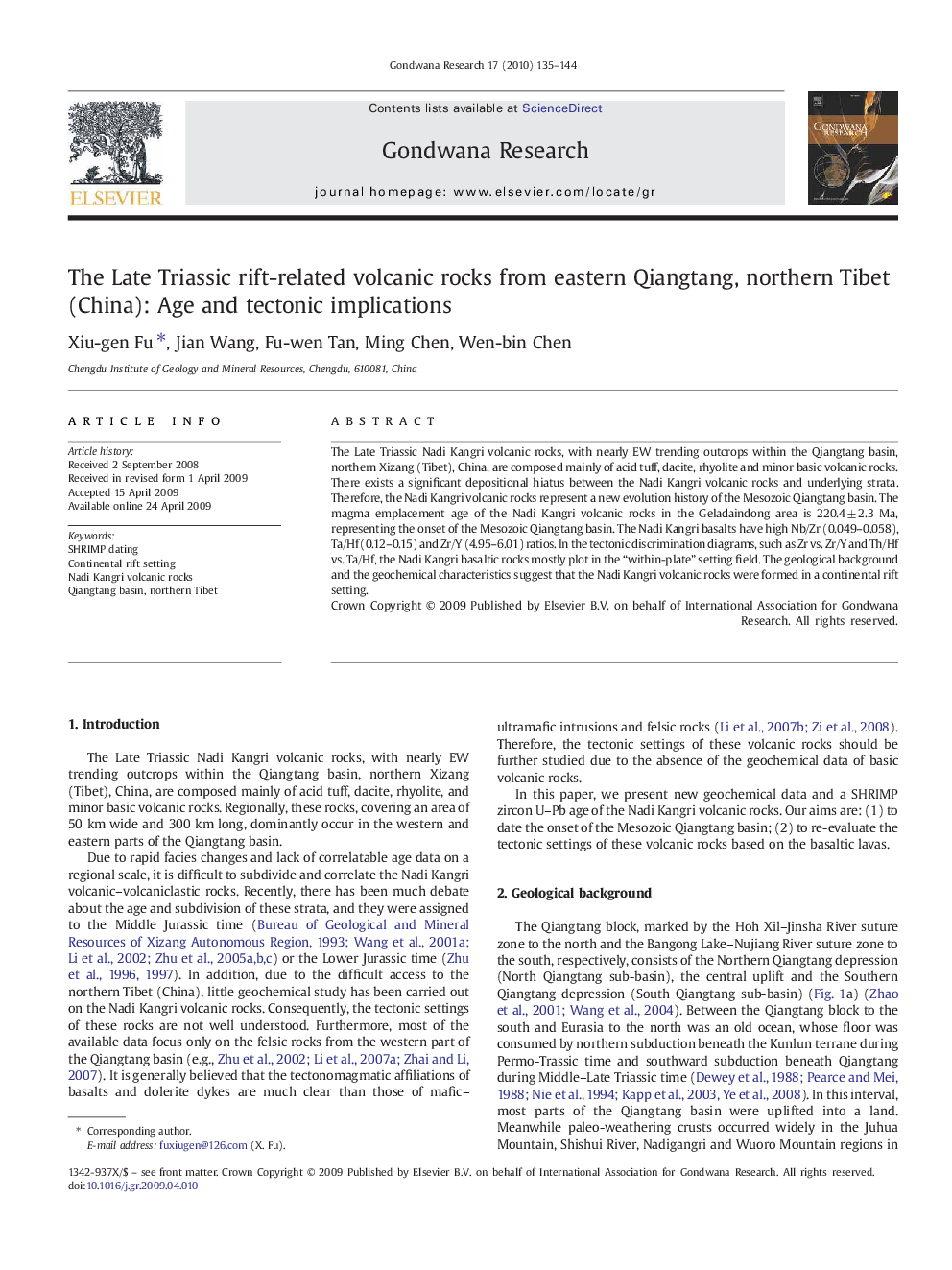| Article ID | Journal | Published Year | Pages | File Type |
|---|---|---|---|---|
| 4727267 | Gondwana Research | 2010 | 10 Pages |
The Late Triassic Nadi Kangri volcanic rocks, with nearly EW trending outcrops within the Qiangtang basin, northern Xizang (Tibet), China, are composed mainly of acid tuff, dacite, rhyolite and minor basic volcanic rocks. There exists a significant depositional hiatus between the Nadi Kangri volcanic rocks and underlying strata. Therefore, the Nadi Kangri volcanic rocks represent a new evolution history of the Mesozoic Qiangtang basin. The magma emplacement age of the Nadi Kangri volcanic rocks in the Geladaindong area is 220.4 ± 2.3 Ma, representing the onset of the Mesozoic Qiangtang basin. The Nadi Kangri basalts have high Nb/Zr (0.049–0.058), Ta/Hf (0.12–0.15) and Zr/Y (4.95–6.01) ratios. In the tectonic discrimination diagrams, such as Zr vs. Zr/Y and Th/Hf vs. Ta/Hf, the Nadi Kangri basaltic rocks mostly plot in the “within-plate” setting field. The geological background and the geochemical characteristics suggest that the Nadi Kangri volcanic rocks were formed in a continental rift setting.
